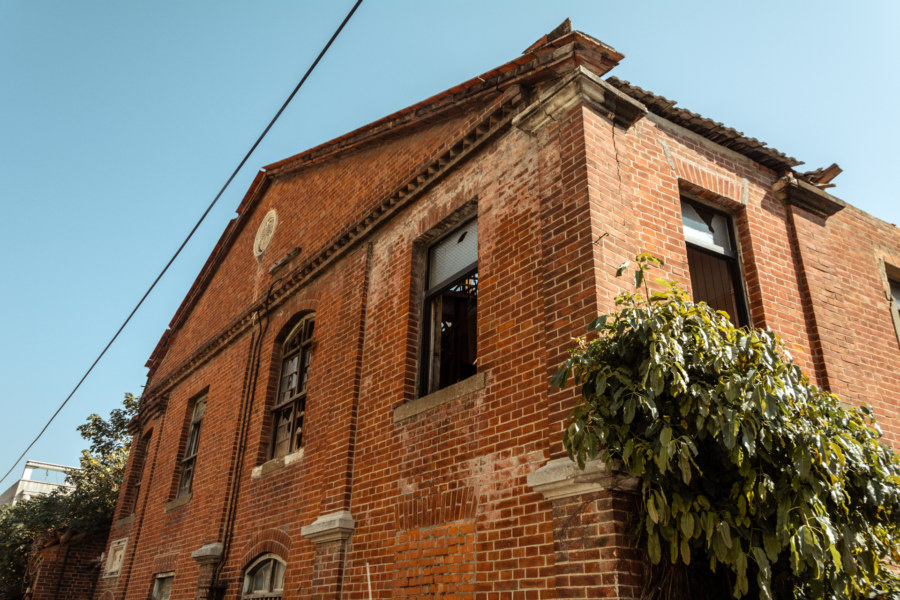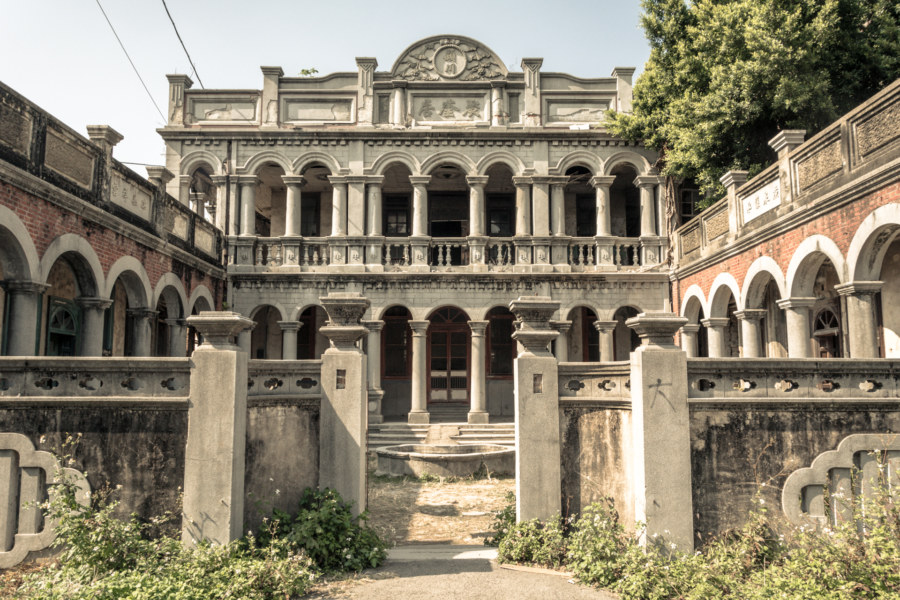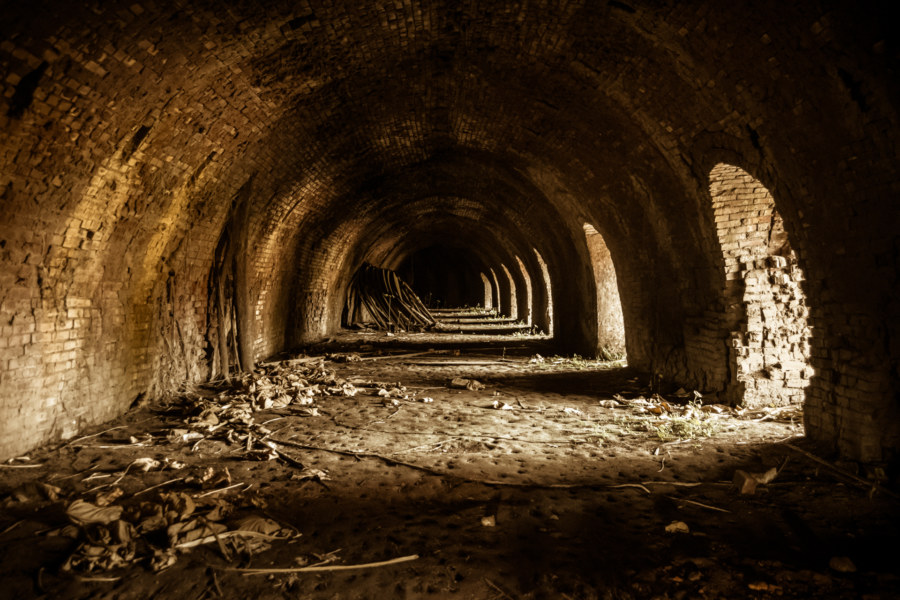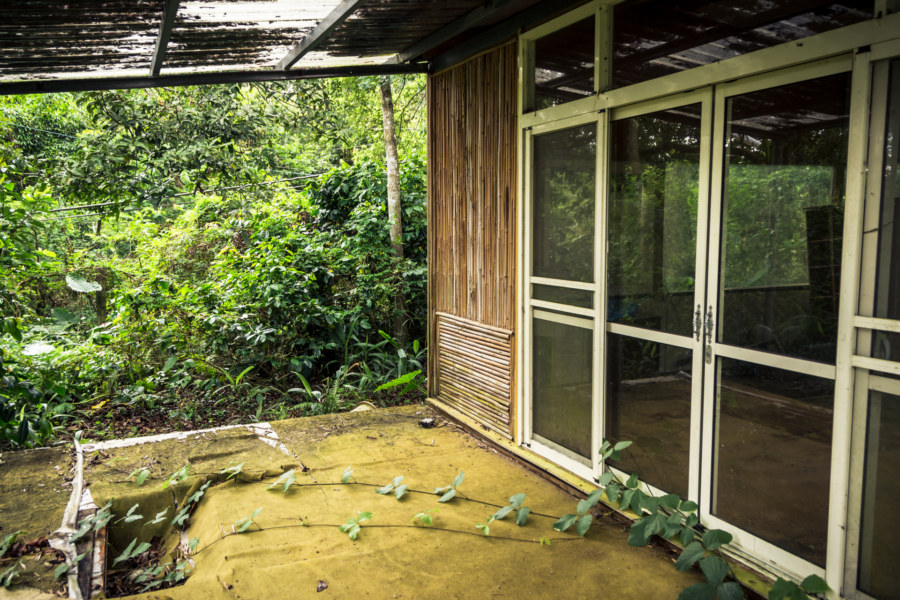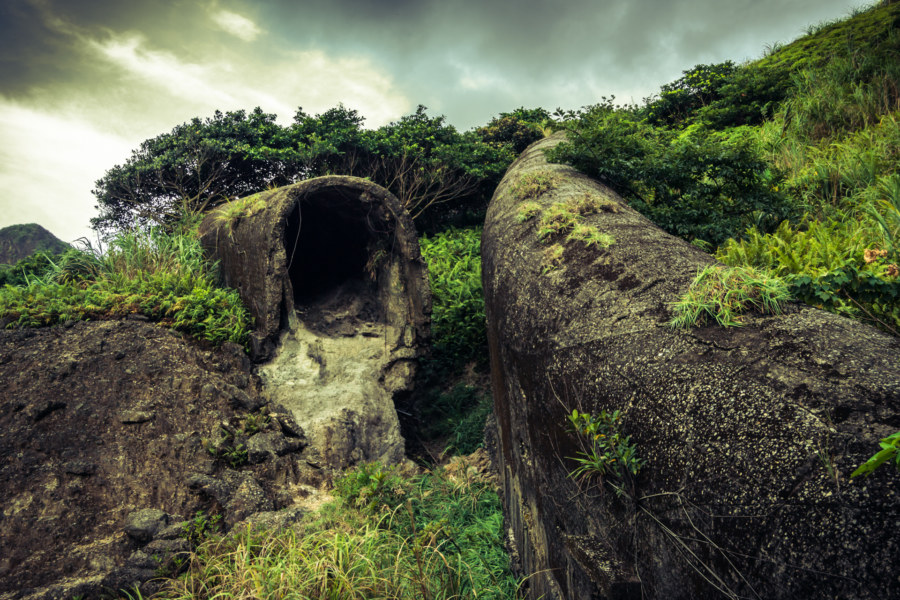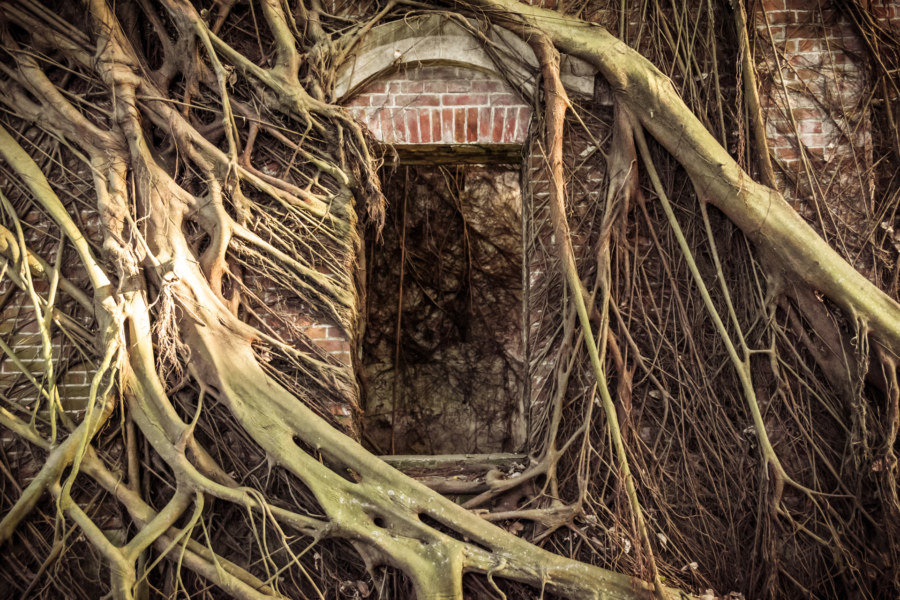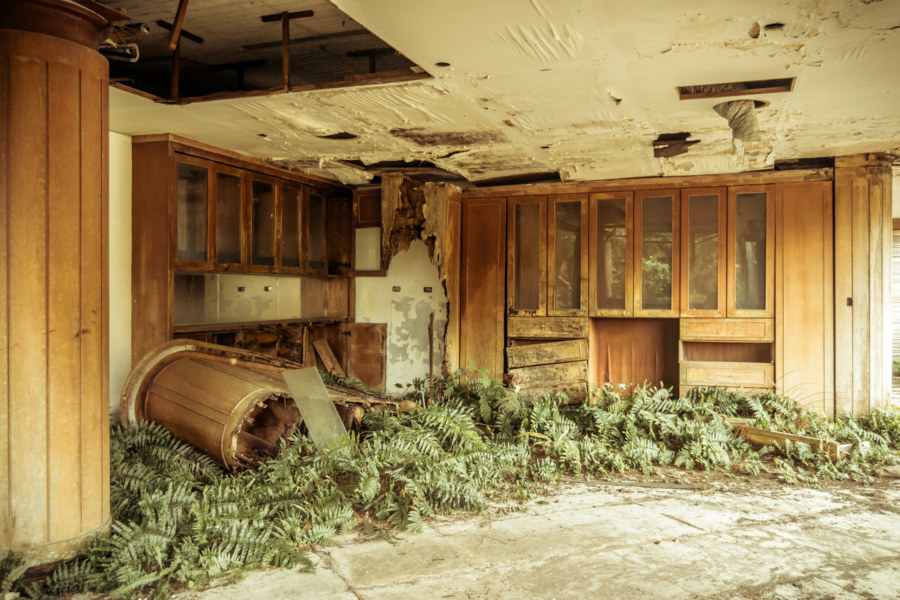During the Japanese colonial era the liquor trade in Taiwan—along with tobacco, camphor, and several other goods—was tightly controlled by a government agency, the Monopoly Bureau. Alcohol was sold exclusively through a network of authorized distributors, many of whom were local Taiwanese who evidently became quite wealthy, as this crumbling yet majestic ruin in the back alleys of Changhua City would suggest. Located along a small laneway just off Mínshēng Road 民生路, this two-story brick mansion was formerly the residence of the local liquor monopoly distributor.
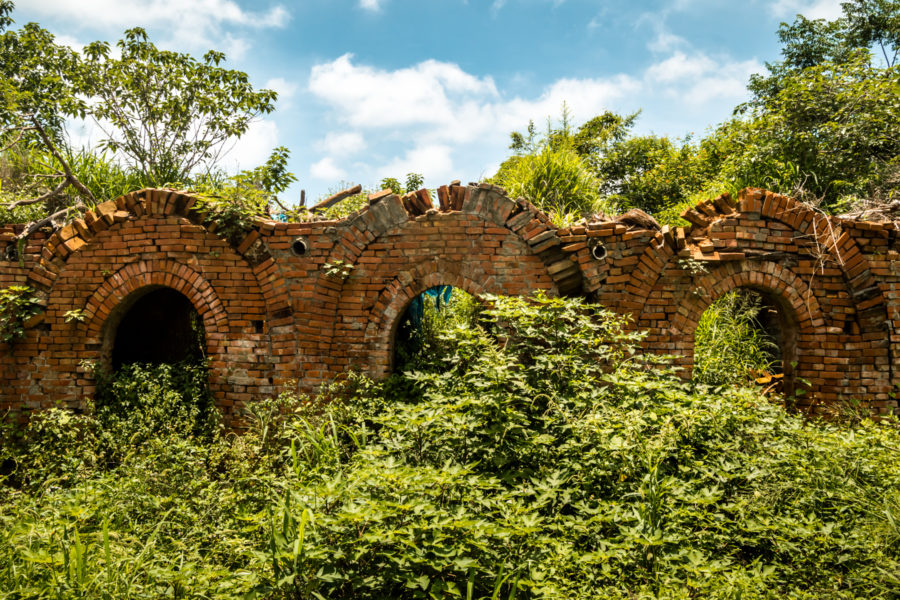
The rewilding is the process by which nature reclaims the works of humankind. I apply this term to any of my posts that feature abandoned places with vegetation growing out of the ruins.
Adjacent Terms
Jukuiju 聚奎居
Jùkuíjū 聚奎居 is an abandoned mansion in Wuri, Taichung, built in 1920 by Chén Shàozōng 陳紹宗, a wealthy businessman and landowner. The architecture is a combination of the traditional Taiwanese sānhéyuàn 三合院 (a U-shaped building with three parts surrounding a central courtyard) and the Baroque Revival style of the Japanese colonial era. It is located on the rundown, industrial margins of the city, along an otherwise unremarkable lane next to a military base, looking completely out of place in space and time.
Jinshuncheng Hoffmann Kiln 金順成八卦窯
Jīnshùnchéng Hoffmann Kiln 金順成八卦窯 is located on the eastern Changhua Plain 彰化平原 in Huatan, a rural township south of Changhua City. During the Japanese colonial era this part of Taiwan specialized in brick and ceramic production due to plentiful supplies of high-quality clay, and the industry continued to expand after the arrival of the KMT. This particular kiln only dates back to the early 1960s and is the last of its kind in Changhua. For that reason the county government designated it a historic building in 2010 but very little has been done to clean the site and make it inviting to visitors.
Vanilla Garden Minsu 香草園民宿
I was out riding a scooter from Changhua the hot springs resort town of Guanziling in rural Tainan when I noticed a rundown, seemingly abandoned building by the roadside in the mountains of Zhongpu, Chiayi. Stopping to investigate, I discovered a mínsù 民宿 (essentially a bed and breakfast) in the early stages of decay. Initially I had no luck finding out any information about this place but more recently I uncovered its formal name: Dòngzǐjiǎo Vanilla Garden Minsu 凍仔腳香草園民宿. Dongzijiao, apparently famous for its betel nut crop, is the name of the nearest village.
Changren Waste Flues 長仁廢煙道
The waste flues of Ruifang are an extraordinary sight. The ruins of these massive, crumbling conduits run for miles up the mountainside from the Shuinandong Smelter 水湳洞精鍊廠 and the rest of the abandoned mining complex below. Originally built during the KMT authoritarian era to transport noxious fumes and waste gases away from the refinery—and nearby settlements like Jīnguāshí 金瓜石—these flues are reputedly the longest in the world.
Minxiong Liu Family Mansion 民雄劉家洋樓
The Liu Family Mansion (劉家古厝) in Minxiong, Chiayi, is one of the most famous ruins in all Taiwan. Situated in the countryside just outside of town, this old Baroque Revival-style red brick building is more informally known as the dreaded Minxiong Ghost House (民雄鬼屋). It was built in 1929 for Liú Róngyù (劉溶裕), a businessman with seven children, and appears to have been abandoned sometime in the early 1950s, not long after the end of Japanese colonial rule.
Yongye Road Hotel 永業路旅館
I was out cycling through Bitan in Xindian one night when I noticed a big building with blown-out windows looming over Yongye Road (永業路). The skeletal outline of a collapsed rooftop against the umbral sky confirmed my suspicions: this building was abandoned. It was too dark to take a closer look that particular night but I vowed to return.
